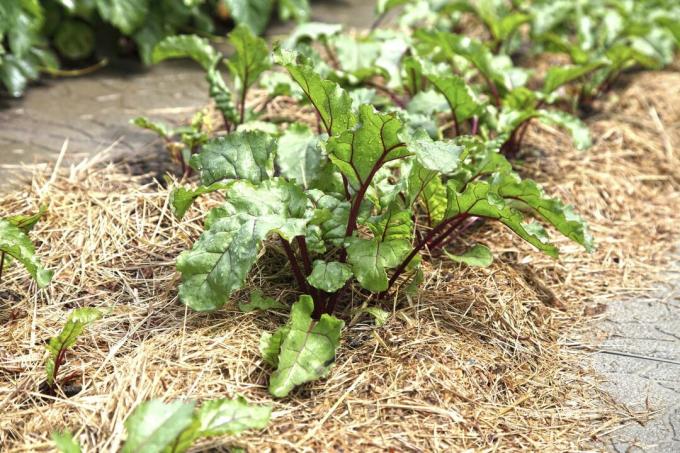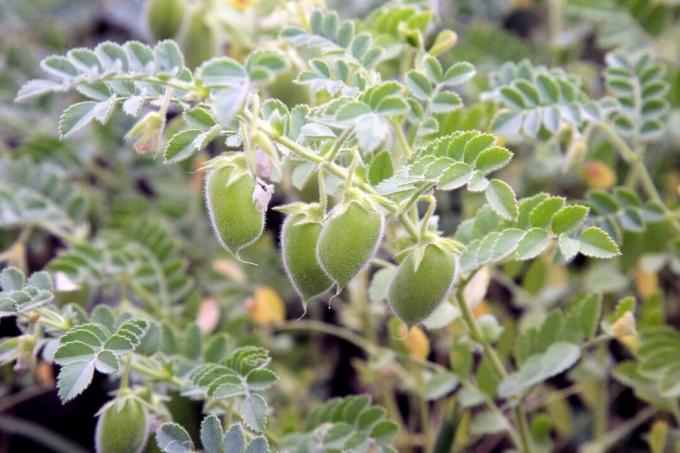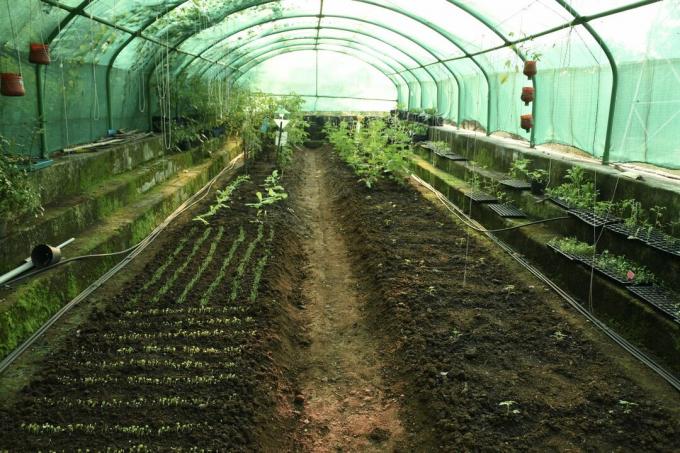Vegetables with low water requirements are becoming increasingly popular in our increasingly hot summers. We present 10 easy-care vegetables for dry, hot locations.

Not all types of vegetables can cope with dry soil in the hot summer months. The water requirement of the respective species plays a major role here. So which vegetables need little water? We will introduce you to drought-tolerant vegetables and measures to reduce water requirements.
Which vegetables need little water?
Deep-rooted, robust vegetables are the best choice in dry and hot weather, as they can obtain sufficient moisture from the deeper layers of the soil for longer. They are therefore drought tolerant and have only a low water requirement. We introduce you to 10 vegetables for dry locations.
- bush beans (Phaseolus vulgaris) have a significantly lower water requirement than runner beans. The soil should never dry out completely before flowering, which can be easily implemented with a layer of mulch.
- lenses (Lens culinaris) are among the most undemanding types of vegetables, they require little care after sowing and thrive very well in dry, warm locations. The lens is originally native to the Mediterranean region and is therefore ideally suited to hot summers.
- Chickpeas (Cicer arietinum) are particularly drought and heat resistant. They love warmth and prefer dry, nutrient-poor soil. The chickpea only needs to be watered a little during periods of extreme drought during the flowering period.
- peas (Pisum sativum) require sufficient moisture before flowering, but then cope well with drought. The more robust marrow and shell peas require less water than the crunchy mangetout.
- radish (Raphanus sativus) has an extremely low water requirement, it hardly ever needs to be watered after germination. However, a little extra watering will soften the sharpness of the thick storage root.

- Beetroot (Beta vulgaris) can be grown in open ground without additional watering. After germination, a beet body is formed in which the beetroot stores water and minerals. The summer downpours are usually enough to harvest decent bedding.
- tigernuts (Cyperus esculentus) belong to the sour grass family (Cyperaceae) and form small, sweet-tasting nodules underground. As long as the plants can develop a good root system, they tolerate heat and drought well. In longer periods of drought, however, the tiger nut should be watered sparingly.
- Corn (Zea mays) only needs a well moistened soil directly at the time of germination. Once a stately young plant has formed, it hardly needs to be watered. In most cases, the summer precipitation is sufficient. popcorn corn requires even less water than sweetcorn.
- garlic (Allium sativum) stores existing moisture in its underground storage bulbs. In this way, it survives longer periods of drought unscathed and still produces a good yield. Excessive watering can even cause the garlic cloves to rot. Especially in the time after planting the daughter bulbs, watering should be sparing, if at all.
- onions (Allium cepa) generally have a low water requirement. During the onion's main growing season from mid-June to early August, watering should be given now and again to ensure a good yield. On the other hand, dryness and heat from the end of August promote the ripening of the onions until they are harvested.
tip: Discover in our Plantura online shop Sustainable products for successful vegetable cultivation, such as our peat-free or low-peat potting soils in organic quality, which CO2-reduced and produced in a climate-friendly manner. A good soil structure contributes significantly to the water balance in the soil. Our peat-free Plantura organic tomato & vegetable soil has a high compost content, which stores moisture and releases it to the plant roots when needed.
How can you reduce the water requirements of vegetables?
Most vegetables need a lot of water to grow and produce well. Fruit vegetables such as tomatoes (Solanum lycopersicum) and zucchini (Cucurbita pepo subsp. pepo convar. giromontiina) suffer quickly from drought. cucumbers (Cucumis melo) often take on a bitter taste under drought stress and become inedible. Fast-growing vegetables such as lettuce (Lactuca sativa) and radishes (Raphanus sativus var. sativus) tend to wilt quickly if the water supply is insufficient. We would therefore like to introduce you to some care measures that help to reduce the water requirements of vegetables:
- Sow instead of plant: A vegetable seedling germinated in situ quickly develops a deep root system into the lower, longer-wetted layers of soil. If you already put large young plants in the bed, they will need a much longer time to penetrate into the depths. They are significantly more sensitive to drought, especially during the growing season. Therefore, if possible, sowing should be done instead of planting.
- mulching: Covering the soil with plant material reduces the evaporation of soil water supplies and at the same time serves as food for your soil organisms. Compensatory fertilization is important here, since the decomposition of the mulching material binds nitrogen.

- Shade: In midsummer, if you darken the walls of your greenhouse facing south with cloths, this reduces evaporation on the one hand and the dryness and heat stress on the residents inside on the other. Outdoors, rain roofs made of wood or metal can be darkened on the south side.
- Proper casting: It is best to water in the morning and evening, not during the hottest part of the day. In addition, plants should be watered directly at the bottom and never overhead.
Vegetables have different requirements and ripening times, which is why they are sown in different months. Our sowing calendar tells you which vegetables are sown in which month.

